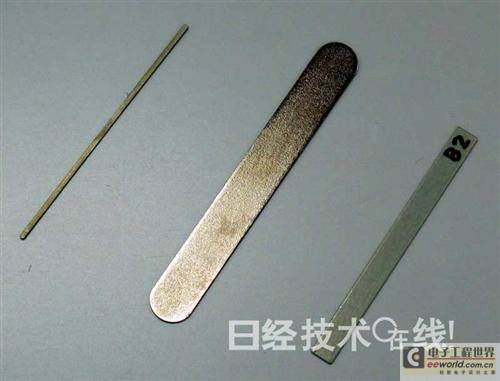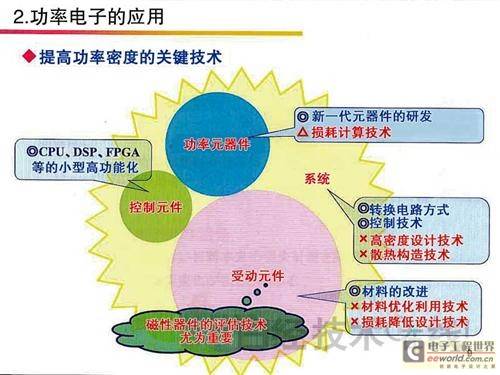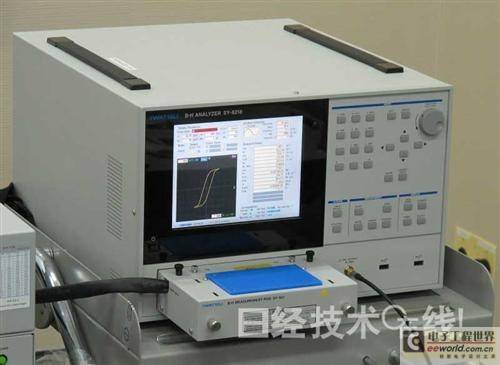Power electronic devices are products used to control power in a variety of devices such as air conditioners, photovoltaic power generation systems, and pure electric vehicles. Power semiconductors are responsible for their miniaturization and high efficiency. In addition to the widely used silicon (Si) semiconductors (FETs and diodes), power semiconductors now also include semiconductors made of SiC (silicon carbide) and GaN (gallium nitride). In fact, magnetic materials are also important for the miniaturization and efficiency of power electronic devices. The following mainly introduces two soft magnetic materials that are being developed by Japanese government projects.
Soft magnetic materials are mostly used for the iron core and magnetic shield of coils. They are indispensable magnetic materials for transformers, analog filters and motors. The main raw materials are iron alloys such as silicon steel and iron-nickel alloy (Figure 1).
Hard magnetic materials are materials that retain their magnetism after being magnetized in a magnetic field, while soft magnetic materials tend to lose their magnetism after being magnetized. Permanent magnets such as neodymium magnets, which have attracted much attention due to the rare earth issue, are made of hard magnetic materials. The reason why the iron core of an electromagnet can be magnetic when current flows through the coil, but loses its magnetism when the current is stopped, is because the iron core is made of soft magnetic materials.
Compared with semiconductors, magnetic components are a bigger bottleneck
Professor Toshihisa Shimizu (Department of Electrical and Electronic Engineering, Graduate School of Science and Engineering) of Tokyo Metropolitan University in Japan believes that "power electronic devices cannot evolve with SiC and GaN alone." Professor Shimizu said that over the past 40 years, the power density of power electronic products has been increasing at a rate of 10 times every 15 years. However, the technical limit of power density improvement is about to be reached.
The power density here refers to the value obtained by dividing the output power of power electronic equipment by its volume. Professor Shimizu pointed out that although the efficiency of power semiconductors is increasing year by year, and new semiconductors such as SiC and GaN are gradually being put into use, there are still technical limits because "the volume of (other components) dominates". Taking the latest power electronic equipment (inverter) with an output power of 10kW as an example, in the entire product, the volume of power semiconductors does not exceed 15%, noise filters and smoothing capacitors each account for 30%, and high-frequency transformers account for 25%. The development of components other than power semiconductors can effectively improve the power density of products.
In view of this situation, Professor Shimizu emphasized that the key to improving the power density of power electronic equipment in the future is to promote the development of passive components that support power semiconductors (Figure 2). He believes that magnetic devices such as transformers and filters are particularly important among passive components.
Material development to reduce iron loss is becoming more active
The development of soft magnetic materials with low iron loss is likely to promote the evolution of magnetic devices. When a sine wave, rectangular wave, or current with voltage variation is passed through the coils of transformers and filters, the iron core will produce loss, which is iron loss. Large iron loss will generate heat, and it is difficult to reduce the size of electronic products in order to dissipate heat, which hinders the improvement of power density.
Furthermore, when the switching frequency is increased to achieve higher efficiency and smaller size of inverters that control power consumption of electronic equipment, iron loss increases. The reason is that among the hysteresis loss, eddy current loss, and residual loss that constitute iron loss, hysteresis loss is proportional to the frequency, and eddy current loss is proportional to the square of the frequency (Figure 3).
Therefore, it is necessary to develop soft magnetic materials that are less likely to produce iron loss even at high frequencies, because "soft magnetic materials have a lot of room for reducing iron loss" (Shimizu). However, there was no evaluation method for soft magnetic materials before, so they have never been optimized. Iron loss changes with the shape of the core, the waveform of the current flowing through the coil, the current and magnetic field previously applied, and the size of the crystal particles.
Previously, the development of materials to reduce iron loss was conducted under conditions where material manufacturers had conducted tests, but in the future, it will be conducted under actual use conditions. The two projects led by the Japanese government, the "Tohoku Region Material Technology Leading Project" and the "High-efficiency Motor Magnetic Material Technology Research Group", began developing soft magnetic materials in 2012. Koji Takano, director of the technical department of Iwatsu Measuring Co., Ltd., which sells material magnetic measuring instruments, said, "Recently, research on soft magnetic materials has become increasingly popular," and the company launched a magnetic measuring instrument for soft magnetic materials in August 2013.
Previous article:ARPA-E develops innovative electric vehicle energy storage technology
Next article:New waste heat recovery solution can help electric vehicles increase mileage by 5%
- Popular Resources
- Popular amplifiers
- A new chapter in Great Wall Motors R&D: solid-state battery technology leads the future
- Naxin Micro provides full-scenario GaN driver IC solutions
- Interpreting Huawei’s new solid-state battery patent, will it challenge CATL in 2030?
- Are pure electric/plug-in hybrid vehicles going crazy? A Chinese company has launched the world's first -40℃ dischargeable hybrid battery that is not afraid of cold
- How much do you know about intelligent driving domain control: low-end and mid-end models are accelerating their introduction, with integrated driving and parking solutions accounting for the majority
- Foresight Launches Six Advanced Stereo Sensor Suite to Revolutionize Industrial and Automotive 3D Perception
- OPTIMA launches new ORANGETOP QH6 lithium battery to adapt to extreme temperature conditions
- Allegro MicroSystems Introduces Advanced Magnetic and Inductive Position Sensing Solutions
- TDK launches second generation 6-axis IMU for automotive safety applications
- LED chemical incompatibility test to see which chemicals LEDs can be used with
- Application of ARM9 hardware coprocessor on WinCE embedded motherboard
- What are the key points for selecting rotor flowmeter?
- LM317 high power charger circuit
- A brief analysis of Embest's application and development of embedded medical devices
- Single-phase RC protection circuit
- stm32 PVD programmable voltage monitor
- Introduction and measurement of edge trigger and level trigger of 51 single chip microcomputer
- Improved design of Linux system software shell protection technology
- What to do if the ABB robot protection device stops
- Detailed explanation of intelligent car body perception system
- How to solve the problem that the servo drive is not enabled
- Why does the servo drive not power on?
- What point should I connect to when the servo is turned on?
- How to turn on the internal enable of Panasonic servo drive?
- What is the rigidity setting of Panasonic servo drive?
- How to change the inertia ratio of Panasonic servo drive
- What is the inertia ratio of the servo motor?
- Is it better for the motor to have a large or small moment of inertia?
- What is the difference between low inertia and high inertia of servo motors?
- Ask everyone a question about 4G wireless data transmission
- Application of high power amplifier in inverse system control of hyperbolic function model, Xi'an Antai Electronics
- Wi-Fi&BLE SoC NANO main control board (WBRU) development board XANWE has not been evaluated yet 02--Understand the product features
- Use MSP430 to connect RTC module (DS2321) to make a digital clock
- Tuya Smart Module SDK Development Course Series - 3. Quick Start
- FPGA learning and design considerations V.1.pdf
- Active RFID Design Based on MSP430 and CC1100
- New uses for old phones (3) - Install the Android tool Termux
- I have a question about 7060 chip burning!
- What is a patch antenna?




 LM158N
LM158N











 京公网安备 11010802033920号
京公网安备 11010802033920号